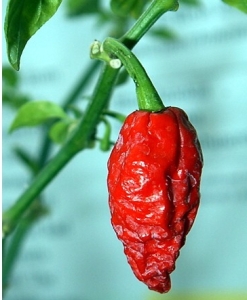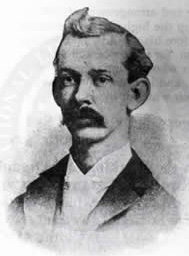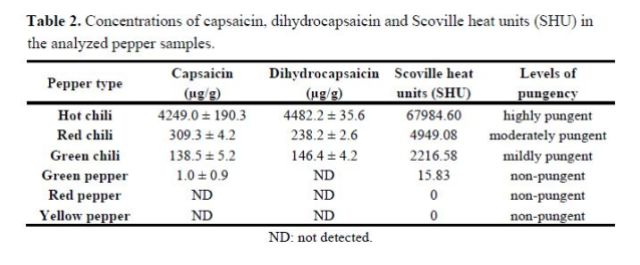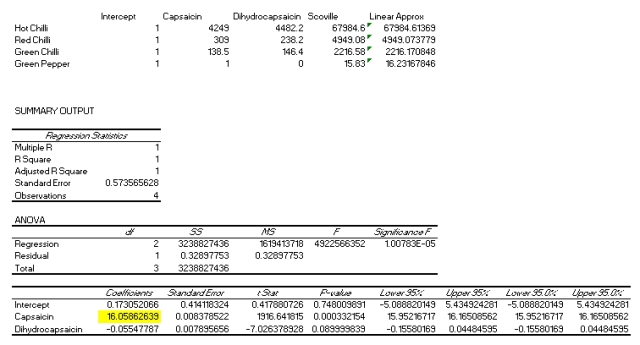Quote of the Day
The ultimate test of a moral society is the kind of world that it leaves to its children.
— Dietrich Bonhoeffer
Introduction
A friend of mine loves the heat of peppers – I only ate one thing he ever gave me and I thought I was going to be a victim of spontaneous human combustion. To maximize the heat in his food, he even cultivates his own ghost peppers (Figure 1), which some describe as the hottest of all the peppers.
We have talked quite a bit about peppers and how their heat is measured using the Scoville scale. The heat is all tied to the amount of capsaicin in the chilli. I even documented one of our early discussions in this post.
While doing some general reading about peppers on the Wikipedia, I saw the following quote on how American Spice Trade Association (ASTA) relates the Scoville scale to the amount of capsaicin for each gram of dry pepper mass.
A measurement of one part capsaicin per million corresponds to about 15 Scoville units, and the published method says that ASTA pungency units can be multiplied by 15 and reported as Scoville units. Scoville units are a measure for capsaicin content per unit of dry mass.This conversion is approximate, and spice experts Donna R. Tainter and Anthony T. Grenis say that there is consensus that it gives results about 20–40% lower than the actual Scoville method would have given.
I never like to see the word "about" in a technical definition. My objective in this post is to show that the unit conversion of "one part capsaicin per million corresponds to about 15 Scoville units" is consistent with measured values of capsaicin in actual chilies.
Background
The Scoville scale was invented by Wilbur Scoville, an American Pharmacist. The original method used to determine the Scoville measure of a pepper used human testers and would follow the process described below (source).
In Scoville's method, an alcohol extract of the capsaicin oil from a measured amount of dried pepper is added incrementally to a solution of sugar in water until the "heat" is just detectable by a panel of (usually five) tasters; the degree of dilution gives its measure on the Scoville scale. Thus a sweet pepper or a bell pepper, containing no capsaicin at all, has a Scoville rating of zero, meaning no heat detectable. ...The greatest weakness of the Scoville Organoleptic Test is its imprecision, because it relies on human subjectivity. Tasters taste only one sample per session.
I thought that I would take a look at a study of some peppers and determine my own relationship between capsaicin level and the Scoville scale.
Analysis
Approach
My approach is to grab some measured pepper data from a research paper and do a bit of regression on the results.
Raw Data
Figure 3 shows some raw chili data from this research paper.
Regression
Figure 4 shows my linear regression between Scoville units and capsaicin and dihydrocapsaicin levels using Excel . Note that the p-values tell us that only capsaicin is important with respect to the Scoville number.
Notice the coefficient for the capsaicin term is 16.05. This is "about 15".
Conclusion
I was able to show that for the data at hand, 16.05 Scoville units equals 1 μgram capsaicin per 1000 grams of dry pepper. This is consistent with the "about 15" number that is frequently quoted.





Just what I need, working on this technique to test my pepper and need formula for powder
http://www.odec.ca/projects/2008/like8k2/
what does "dry pepper" mean?